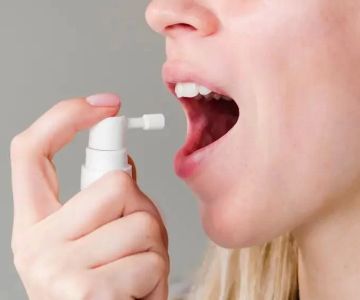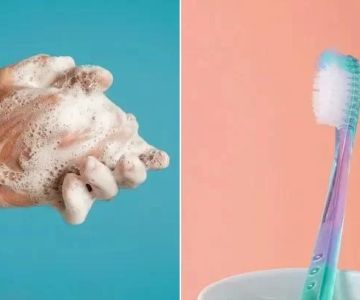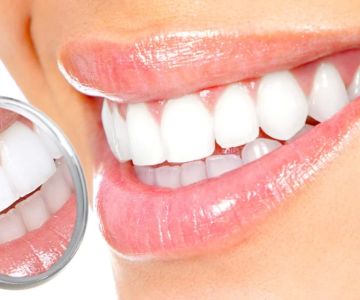The Effects of a High-Sugar Diet on Oral Health: Risks and Solutions
As we continue to indulge in sugary snacks, sodas, and desserts, it's easy to forget the lasting impact that sugar has on our oral health. A high-sugar diet is one of the most significant contributors to dental problems, including cavities, gum disease, and tooth decay. I’ve seen firsthand how the constant consumption of sugary foods can lead to problems that go far beyond the occasional sugar rush. Over the years, I’ve learned that understanding the impact of sugar on your teeth and gums is crucial for maintaining optimal oral health. In this article, I’ll walk you through the effects of a high-sugar diet on oral health and offer practical advice on how to combat these issues.
1. The Science Behind Sugar and Oral Health
To understand the impact of sugar on oral health, it’s essential to know how sugar interacts with the bacteria in our mouths. When we consume sugar, the bacteria in our mouths feed on it, producing acids as a byproduct. These acids attack the enamel, which is the protective outer layer of our teeth. Over time, repeated acid attacks weaken the enamel, leading to tooth decay and cavities.
What I find interesting is that it’s not just sugary foods like candies and cookies that contribute to this damage. Even foods like bread, pasta, and fruit juices, which are often considered healthy, can also be broken down into sugar in the mouth. This means that a diet high in processed foods can lead to the same risks as indulging in desserts.
Interestingly, when we don’t brush or rinse our mouths after eating, these acids remain in the mouth for longer, increasing the chances of enamel erosion. That’s why brushing and flossing after meals is so essential for protecting our teeth from the harmful effects of sugar.
2. How Sugar Leads to Cavities and Tooth Decay
Cavities, also known as dental caries, are one of the most common consequences of a high-sugar diet. I’ve noticed that many people associate cavities with bad hygiene or not brushing enough, but sugar plays a significant role in cavity formation. When sugars are consumed, the bacteria in the mouth produce acids that demineralize the enamel. Over time, this leads to the formation of small holes in the teeth, which become larger and deeper if not treated.
These cavities can cause pain, sensitivity, and discomfort, which is why it’s crucial to avoid a diet high in sugar. I’ve seen cases where individuals with frequent sugar consumption experienced recurring cavities, despite regular brushing. This highlights how important it is to reduce sugar intake in addition to brushing and flossing.
Another surprising fact is that sugary foods can even contribute to the growth of harmful bacteria in the mouth. Certain types of bacteria thrive on sugar, leading to an imbalance in the oral microbiome and an increase in plaque buildup. This plaque can eventually harden into tartar, which is much harder to remove and can contribute to further decay and gum disease.
3. Sugar and Gum Disease: A Hidden Danger
While cavities are the most obvious problem associated with sugar consumption, the impact on gum health is just as concerning. A high-sugar diet can contribute to gum disease, a condition that affects the tissues surrounding the teeth. I’ve worked with many patients who have experienced gum inflammation and bleeding due to sugar-induced plaque buildup. The more plaque and tartar there is on the teeth, the more it irritates the gums, causing them to become swollen and inflamed.
In advanced stages, gum disease can lead to periodontal disease, which can cause tooth loss if not treated. Interestingly, a diet rich in sugar can also interfere with the body’s ability to fight off infections, making it harder for the gums to heal from these issues. This is why a balanced diet and proper oral hygiene are essential for preventing gum disease.
4. How a High-Sugar Diet Affects Overall Oral Hygiene
A high-sugar diet doesn’t just affect the teeth and gums directly. It also impacts our overall oral hygiene in ways we might not always recognize. I’ve seen patients whose overall oral hygiene suffers due to the constant presence of sugar in their diets. When sugar lingers in the mouth, it provides a constant source of food for bacteria. This can lead to bad breath, increased plaque buildup, and an overall decline in oral health.
Additionally, a sugar-heavy diet can lower the mouth’s pH, creating a more acidic environment. An acidic mouth is not only a breeding ground for harmful bacteria but also makes it harder for the mouth to repair itself. Saliva plays a critical role in neutralizing acids and providing minerals that help remineralize teeth, but an acidic environment limits its ability to do so.
The negative impact on saliva production is something that many people don’t realize. When your mouth becomes more acidic, it becomes harder for your body to maintain a healthy balance in your oral environment, leaving your teeth and gums more vulnerable to infection and damage.
5. Reducing the Impact of Sugar on Oral Health: Tips and Solutions
While sugar’s effects on oral health are undeniable, there are many ways to reduce its impact and maintain a healthy smile. Here are some strategies I’ve found to be effective:
- Brush after eating: Brushing your teeth after eating helps remove the sugar and plaque buildup that can lead to cavities. Use fluoride toothpaste to strengthen your enamel and reduce acid wear.
- Floss regularly: Flossing is essential for removing sugar and food particles that get stuck between your teeth and gums.
- Limit sugary snacks: Reducing your intake of sugary snacks throughout the day helps minimize the amount of time your teeth are exposed to sugar.
- Drink water: Water helps wash away food particles and keeps your mouth hydrated, promoting a healthy oral environment.
- Visit the dentist regularly: Regular checkups and cleanings can catch early signs of decay and gum disease, giving you the chance to address issues before they become serious.
These simple practices can help mitigate the damage caused by sugar and support your overall oral health. By combining good oral hygiene with a balanced diet, you can significantly reduce the risk of dental problems.







 Westgate Dental Arts
Westgate Dental Arts Coventry Family Dental
Coventry Family Dental Familia Dental
Familia Dental Dr. Daniel S. Fife, DDS
Dr. Daniel S. Fife, DDS Dentistry At Suburban Square: Michael I. Wollock, DMD
Dentistry At Suburban Square: Michael I. Wollock, DMD Comfort Care Dental
Comfort Care Dental The Importance of Oral Health Education During Pregnancy for a Healthy Pregnancy
The Importance of Oral Health Education During Pregnancy for a Healthy Pregnancy Why Skipping Dental Checkups Can Lead to Bigger Oral Health Problems
Why Skipping Dental Checkups Can Lead to Bigger Oral Health Problems Advantages of Porcelain Dental Restorations
Advantages of Porcelain Dental Restorations Best Tips for Brushing Your Teeth Properly for Healthy Gums: Essential Techniques for Oral Health
Best Tips for Brushing Your Teeth Properly for Healthy Gums: Essential Techniques for Oral Health How Can Diabetes Cause Tooth and Gum Problems? Preventing and Managing Oral Health Issues
How Can Diabetes Cause Tooth and Gum Problems? Preventing and Managing Oral Health Issues Healthy Habits for Promoting Good Oral Health and Hygiene: Tips for a Healthy Smile
Healthy Habits for Promoting Good Oral Health and Hygiene: Tips for a Healthy Smile